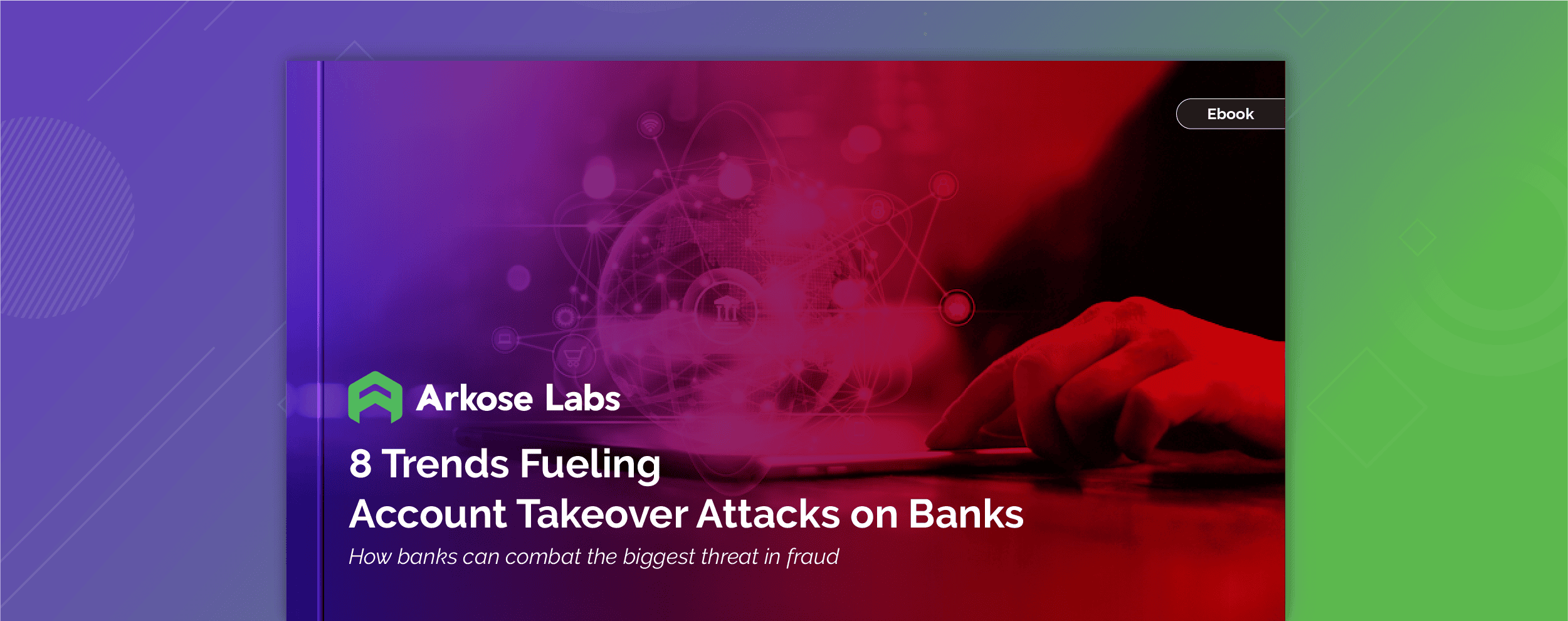Fraudsters are increasingly using account takeovers against financial services organizations
As digital makes deep inroads into banking, it is helping people access banking services and products on the go. Unfortunately, when money is involved, fraudsters are just around the corner. Fraudsters are exploiting the digital banking infrastructure to orchestrate a gamut of attacks—account takeover in particular, which is one of the biggest headaches for banks today.
After a successful account takeover attack, fraudsters commit CNP (card not present) fraud, redeem reward points, launder money, and seek loans. That said, they do not limit themselves to just swooping out all the money from the account. They also use account takeover as a means to control a compromised account remotely and abuse it for many other criminal activities.
How account takeover attacks cause regulatory, financial, and reputational losses
Apart from financial losses, account takeover poses reputational risks for banks. This is because consumers place a lot of trust in their banks when it comes to ensuring secure transactions. An account takeover attack is construed as the bank's failure in maintaining adequate security, and hence consumer trust. This can deal a big blow to the relationship-building efforts and cause unforgiving customers to switch over to competitors. Further, non-compliance with the regulations can attract hefty penalties, causing additional burden on the banks.
Recommended Download: A New Way to Stop Account Takeovers in Banking
How fraudsters use bots and sweatshops to achieve scale
Account takeover attacks are on a steady rise. Data from Arkose Labs reveals that 75% of attacks in the financial services industry in Q1 2022 were account takeover attempts. This increase can be attributed to large-scale and frequent incidents of data breach that fuel these attacks. Fraudsters harvest the invaluable personal information of millions of consumers from these data mining activities and use them for account takeover attacks.
Automated bots are the most popular method fraudsters use for account takeover attacks. This is because automation helps them achieve scale and maximize returns on investment. Further, many bots are so advanced that they can accurately mimic human behavior online. Using the advancements in machine vision technology, these bots can bypass fraud prevention solutions.
Apart from malicious bots and scripts, fraudsters also 'hire' sweatshops to launch large-scale account takeover attacks. These malicious humans can easily circumvent fraud-prevention solutions that are specifically designed to protect against bots. Also, they can quickly clear the legacy challenge-response mechanisms that require more nuanced human interactions.
Why commonly used authentication cannot fight account takeover attacks
Massively corrupted digital identities and advanced tactics used by fraudsters make it even more difficult for banks to fight the menace of account takeover. Unfortunately, a lot of commonly used authentication methods fail to stop account takeover fraud and end up annoying customers. Authentication methods such as two-factor authentication (2FA) are not completely reliable, as the SMS may get delayed or intercepted by fraudsters. Knowledge-driven authentication fails as often customers forget the answers.
Data-driven authentication methods rely on clear 'good' or 'bad' signals from user data. Since fraudsters can accurately mimic true users, they succeed in transmitting 'good' data signals. A true user, on the other hand, may be tagged 'bad' due to a change in online behavior. Further, banks are increasingly facing traffic that does not transmit clear 'good' or 'bad' signal. These signals fall in a gray area, which data-driven solutions cannot decipher. Banks, therefore, need a robust solution that can fend off account takeover attacks without disturbing the user experience.
Five steps to robust account takeover protection
Arkose Labs platform provides banks with a 'bankable' solution that can effectively deal with the traffic in gray areas. It makes the attack long-drawn and eats into the returns to make the attack financially unattractive.
The Arkose Labs solution uses the following five steps to provide robust protection against account takeover attempts:
- Shift the attack surface: Arkose Labs platform shields the customer touchpoints by diverting the attackers to targeted step-up challenges. This disrupts the attackers' plans and relieves the burden from in-house fraud prevention teams.
- Targeted friction: Keeping user experience front and center, Arkose Labs targets high-risk users with higher friction. Continuous intelligence assigns each user with a risk score and provides minimal friction to good users.
- Stepped-up attack remediation: For high-risk users, the platform presents 3D challenges that are dynamically tailored according to the risk profile. These include specific challenges for bots, advanced bots, sweatshops, and lone human attackers.
- Future-proof protection: Continuous feedback between risk analysis and the challenge-response mechanism enables enforcement challenges to adapt to the evolving risk profile of the traffic. This ensures the enforcement challenges always stay ahead of the changing threats.
- Easy integration: The Arkose Labs solution seamlessly integrates with the existing technology stack of the bank and requires minimal IT work.
Arkose Labs erodes the incentives associated with account takeover attacks to provide banks with robust, long-term protection.
To learn more about our capabilities in fighting account takeover fraud, request the Account Takeover solution brief.

8 Trends Fueling Account Takeover Attacks on Banks
- Fraudsters are increasingly using account takeovers against financial services organizations
- How account takeover attacks cause regulatory, financial, and reputational losses
- How fraudsters use bots and sweatshops to achieve scale
- Why commonly used authentication cannot fight account takeover attacks
- Five steps to robust account takeover protection

